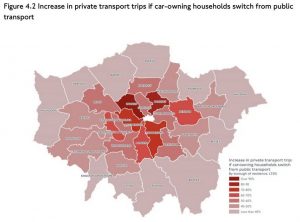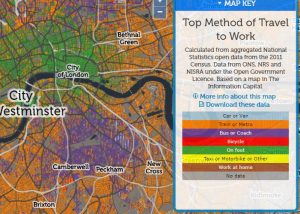We are currently facing an unprecedented crisis. During this time the use of our streets has a direct impact on the lives of people affected by Covid-19. As lockdown measures are slowly lifted traffic volumes are already showing signs of increasing, so an urgent response is needed.
For people to make the choice to walk and cycle they need to be able to do so safely. We need infrastructure to enable people to safely walk and cycle now, otherwise the majority of Southwark households, without access to a car, will have no safe way to get around.
- Act Now – There are three ways you can help us with this campaign! If you’d like to get actively involved in the campaign, contact us at southwark@lcc.org.uk.
- Why This Is Important – Read why it’s so important that Southwark Council acts now!
- Our 3 Key Asks – Implemented measures must address these issues.
- Priority Measures in Southwark – We have identified key measures to Put Southwark on the Map. These will enable active travel in the borough in response to the greatly reduced capacity of public transportation.
- Tracking Southwark’s Progress – See what Southwark Council has done to date to make streets safer for physical distancing and to enable walking and cycling in response to Covid-19. This page also has a timeline of Southwark’s actions and links to their announcements.
- First Round of Southwark’s Streetspace Improvements – Read our blog post explaining Southwark’s initial announcement.
- Show Support for Implemented Measures – Southwark Council has launched Commonplace pages for some of the Streetspace measures they have implemented. We have listed these on our Current Consultations page.
Why This Is Important
We must urgently make our roads safer as we continue to deal with this crisis.
We are currently facing an unprecedented crisis. During this time the use of our streets has a direct impact on the lives of people affected by Covid-19. Public transportation capacity is greatly reduced and with inadequate street and pavement space it is difficult to adhere to physical distancing guidelines.
With the continuing crises of climate change and air pollution, which may be linked to greater impacts from Covid-19, we need to enable sustainable travel in our communities. This will require Southwark Council to take bold action to ensure our streets have safe walking and cycling provisions during and after this crisis.
Despite a dip in the initial lockdown, traffic quickly rose to previous levels across London and the UK, with many lswitching from public transport to private vehicles in the near future. Wuhan saw a dramatic increase in car use after lockdown measures lifted. Polling has shown that in response to the pandemic people in the UK want to use public transportation less, and private vehicles more in the near future.

If every resident in Southwark with access to a car changed their public transportation trips to car trips, traffic would increase by 76%. This does not consider increased traffic through Southwark from residents of other boroughs and from outside of London. With 60% of Southwark households not having access to a car and many residents primarily reliant on buses, we need to ensure traffic does not increase on our roads.

Many people have been commuting to work during the pandemic. A significant percentage of those who are unable to work from home are on lower incomes and also less likely to have access to a car. Enabling those who can walk and cycle to do so will make travel by public transportation and other methods safe and accessible for those who cannot.
The most often cited reason for not cycling more is road danger. Most of Southwark is lacking a safe, high quality, connected cycle network. If people aren’t given options for safe travel, those with cars will drive, and all of us will face the consequences with increased air pollution, impacts on the climate, and gridlocked streets.
Following Government funding and guidance and TfL’s Streetspace Plan, Southwark Council announced their own Streetspace plan. Since then they have implemented low traffic neighbourhoods, protected cycleways, school streets and widened pavements. We are tracking Southwark’s progress here.
All of these measures have been implemented as trials and a decision will be made whether they are made permanent. This means they need your support. There’s also more funding coming, so you can ask for schemes in your area. Here’s how you can support schemes and ask for more.
Our Asks
We ask Southwark Council to:
- Enable safe journeys taken by active travel.
As public transport is being used less, cycling provides an alternative for getting to work. Filtering key routes, particularly those near hospitals, will allow more of our key workers to travel without the stress of road danger. As more people return to work, this will ensure many have a safe way to travel. The Council can also create cycle lanes using temporary materials on key arterial routes on borough managed roads and work with TfL to do the same on their roads. - Provide space for physical distancing in neighbourhoods.
Most pavements are too narrow to keep the recommended 2 metres of distance and even though there is less traffic on our streets there has been increased speeding by drivers. Additionally, many Southwark residents live in high density areas that lack gardens and communal green space. Filtering roads can provide an environment where pedestrians and cyclists can safely use the street while getting exercise that benefits their mental and physical health. - Support people while visiting their high streets.
Many high streets do not have pavements wide enough to accommodate people queuing at shops while allowing others to safely pass following physical distancing guidelines. This leads people to face the choice of either walking too close to people and therefore increasing the risk of exposure, or of walking in the street and putting themselves at risk from cars. Temporarily restricting parking and loading or removing underused traffic lanes will allow for safe physical distancing while people do their essential shopping and also help support our high streets and local shopping centres.
